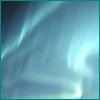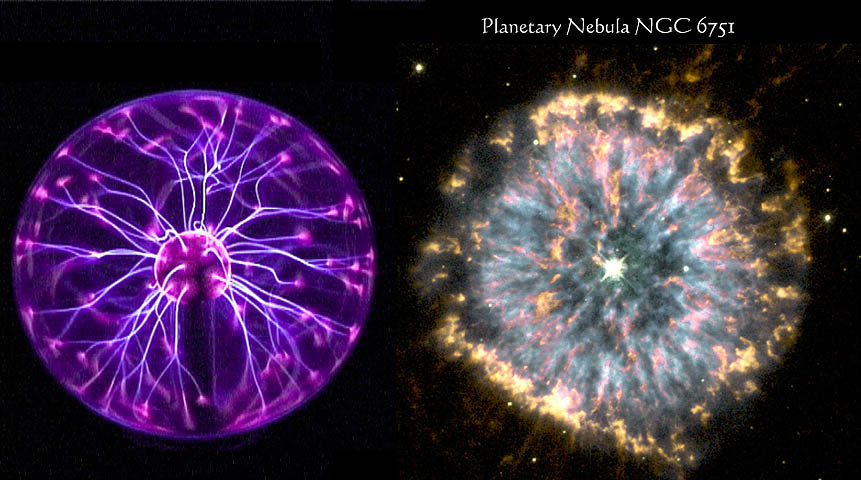| Introduction |
|
 |
| |
|
|
| "Science is the belief in the ignorance of the experts." Richard Feynman |
|
|
| |
|
|
| Plasma Cosmology |
|
|
| |
|
|
| The purpose of this web site is to provide an introduction to the emerging Plasma Universe paradigm, and to explore some of the many far reaching implications.
Mainstream science, for the most part, looks on the universe as electrically neutral and purely mechanical; a place where the weak force of gravity holds fort. Plasma Cosmology, by contrast, acknowledges the electrodynamic nature of the universe. Gravity and inertia are NOT the only forces at work.
The history of science, of course, is fraught with controversy, and it is important to bear in mind that the situation today is little different.
|
|
| "A new scientific truth does not triumph by convincing its opponents and making them see the light, but rather because its opponents eventually die, and a new generation grows up that is familiar with it." Max Planck |
|
| |
|
|
| What is Plasma? |
|
|
| |
|
|
|
Plasma is the fourth state of matter. It differs from solids, liquids and gases in so far as it's atoms are divided into free-floating 'negative' electrons and 'positive' ions (an atom which has lost its electron/s). It is sometimes referred to as an ionized gas.
Students are generally taught about only three states of matter, and when Plasma does get a mention, little importance is assigned. Not only should plasma be added to the list, but the order should be reversed to put it in first place. The reasons for this will become clear.
The term Plasma was borrowed from blood plasma in order to describe its almost life-like and self-organising properties.
Plasma sometimes emits light when under the excitation of electrical and magnetic fields. Polar auroras bear witness to this fact.
|
|
 |
| |
|
|
| Where is it? |
|
|
| |
|
|
| Plasma is almost everywhere. At least ninety-nine percent of the known universe is, in fact, matter in its plasma state! The surface of the sun is plasma; not hot gas, which is quite a different thing.
Plasma in space consists entirely of ions and electrons, and is thus very energetic or 'hot'. Only when cooled does it form the matter to which we are familiar here on Earth: solids, liquids, and gases.
Because plasma remains electrically charged in space, it is influenced more by electromagnetic forces than gravity. In fact space, once considered mostly empty, has been found to be alive with plasma. Vast flows of charged particles have been discovered spanning hundreds-of-thousands of light years across interstellar space.
The most familiar examples of electrical plasmas here on earth are neon signs and lighting, television screens, and electrical arc welding machines. Fire and Lightning are also forms of Plasma.
|
|
 |
| |
|
|
| What does it do? |
|
|
| |
|
|
|
Plasma is an excellent conductor of electricity. Because of its free-flowing electrons its conductive properties far surpass those of copper and gold.
Due to its interaction with electromagnetism, plasmas display a complexity in structure far exceeding that of matter in gaseous, liquid, or solid states. It has a tendency to form into cellular and filamentary structures.
These structures derive from the fact that a charged particle flow (or current) produces a ring of magnetic fields around itself, 'pinching' plasma into multi-filamentary strands, as can be seen on both cosmic and more localised scales. Pictured right is a novelty plasma-lamp typical of those available on the high street.
|
|
 |
| |
|
|
| Mainstream misconceptions |
|
|
| |
|
|
|
While conventional astronomy maps magnetism, electric currents are excluded on the mistaken basis that they are of no significance in space.
Working from the inertia of this prior belief, astrophysicists have a tendency to talk in euphemisms. 'Electron rains' and 'clouds of ionized gas' are just two examples. From a conservative perspective these terms might seem easier to grasp than the behaviour of more ethereal plasma, but they are, nonetheless, obfuscations. In reality we are talking about electrodynamic phenomena.
|
|
Men occasionally stumble over the truth, but most of them pick themselves up and carry on as if nothing ever happened." Winston Churchill |
| |
|
|
| It is important to understand that gravity based models were codified before space travel and high powered telescopes. Back then our galaxy, The Milky Way, was considered the entirety of the universe ... and electrically sterile! Instead of trying to shoehorn what we now see into old models, Plasma Cosmology respects the progress of the past, but is not constrained by it. Scientific theories, by definition, are vulnerable to being falsified. Science moves on. |
|
"It is an embarrassment that the dominant forms of matter in the universe remain hypothetical!" Jim Peebles |
| |
|
|
| The role of Plasma in The Universe |
|
|
| |
|
|
| Plasma cosmology has gone beyond hypothesis and analysis. There are problems with part three, of course, experimentation on universal scales, but the fact is that plasmas are highly scalable, and super-computing capabilities have enabled us to model plasma behaviours on galactic scales ... utilising only a few simple formulae.
These models are consistent with reality. Big Bang cosmology, by contrast, fails to adequately account for the 'clumpiness' and filamentary structures that we observe.
Plasma cosmology does NOT rely on abstract mathematical modelling or an increasing array of exotic hypotheticals like Dark Matter and Dark Energy!
|





